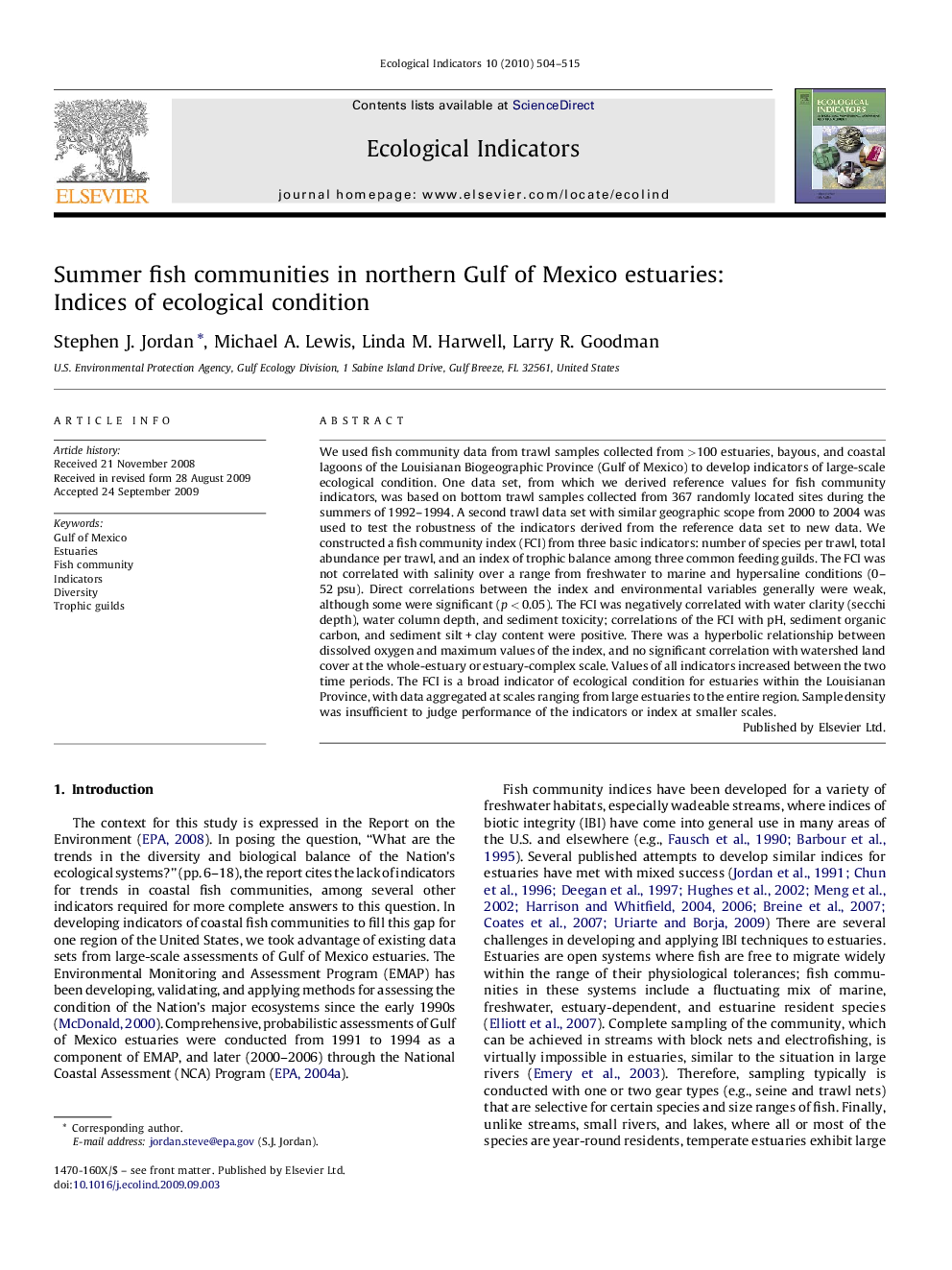| Article ID | Journal | Published Year | Pages | File Type |
|---|---|---|---|---|
| 4374306 | Ecological Indicators | 2010 | 12 Pages |
We used fish community data from trawl samples collected from >100 estuaries, bayous, and coastal lagoons of the Louisianan Biogeographic Province (Gulf of Mexico) to develop indicators of large-scale ecological condition. One data set, from which we derived reference values for fish community indicators, was based on bottom trawl samples collected from 367 randomly located sites during the summers of 1992–1994. A second trawl data set with similar geographic scope from 2000 to 2004 was used to test the robustness of the indicators derived from the reference data set to new data. We constructed a fish community index (FCI) from three basic indicators: number of species per trawl, total abundance per trawl, and an index of trophic balance among three common feeding guilds. The FCI was not correlated with salinity over a range from freshwater to marine and hypersaline conditions (0–52 psu). Direct correlations between the index and environmental variables generally were weak, although some were significant (p < 0.05). The FCI was negatively correlated with water clarity (secchi depth), water column depth, and sediment toxicity; correlations of the FCI with pH, sediment organic carbon, and sediment silt + clay content were positive. There was a hyperbolic relationship between dissolved oxygen and maximum values of the index, and no significant correlation with watershed land cover at the whole-estuary or estuary-complex scale. Values of all indicators increased between the two time periods. The FCI is a broad indicator of ecological condition for estuaries within the Louisianan Province, with data aggregated at scales ranging from large estuaries to the entire region. Sample density was insufficient to judge performance of the indicators or index at smaller scales.
